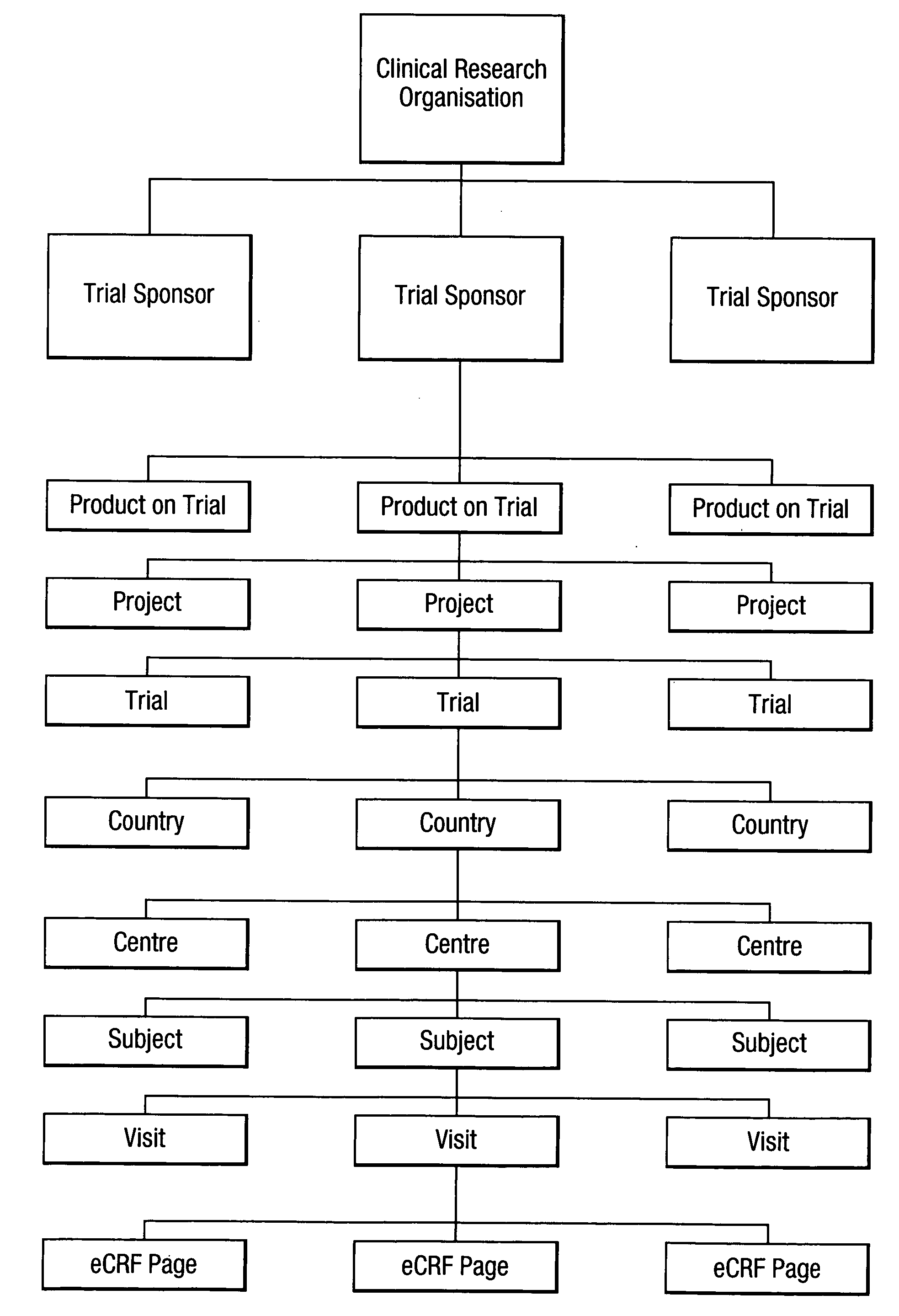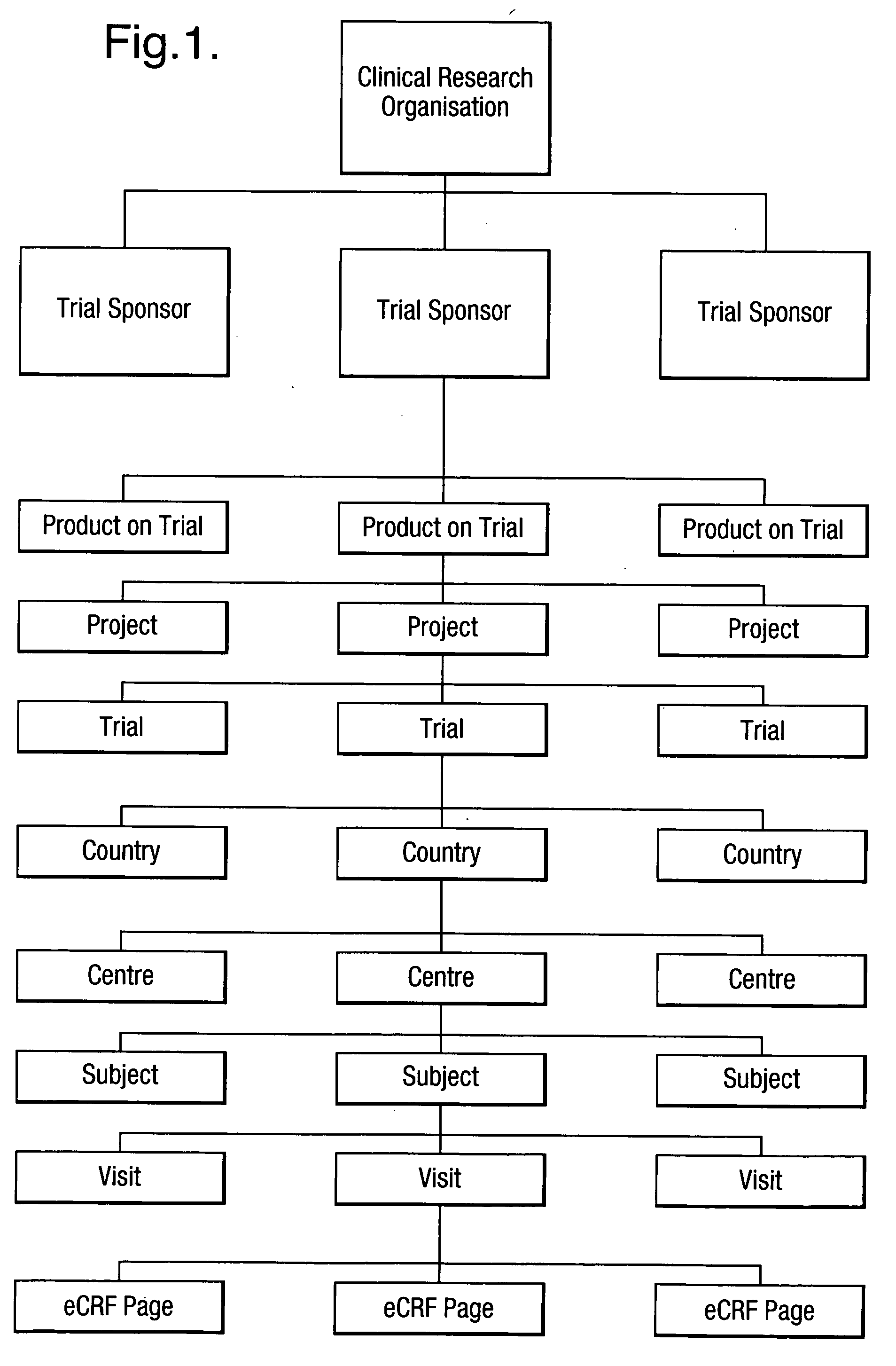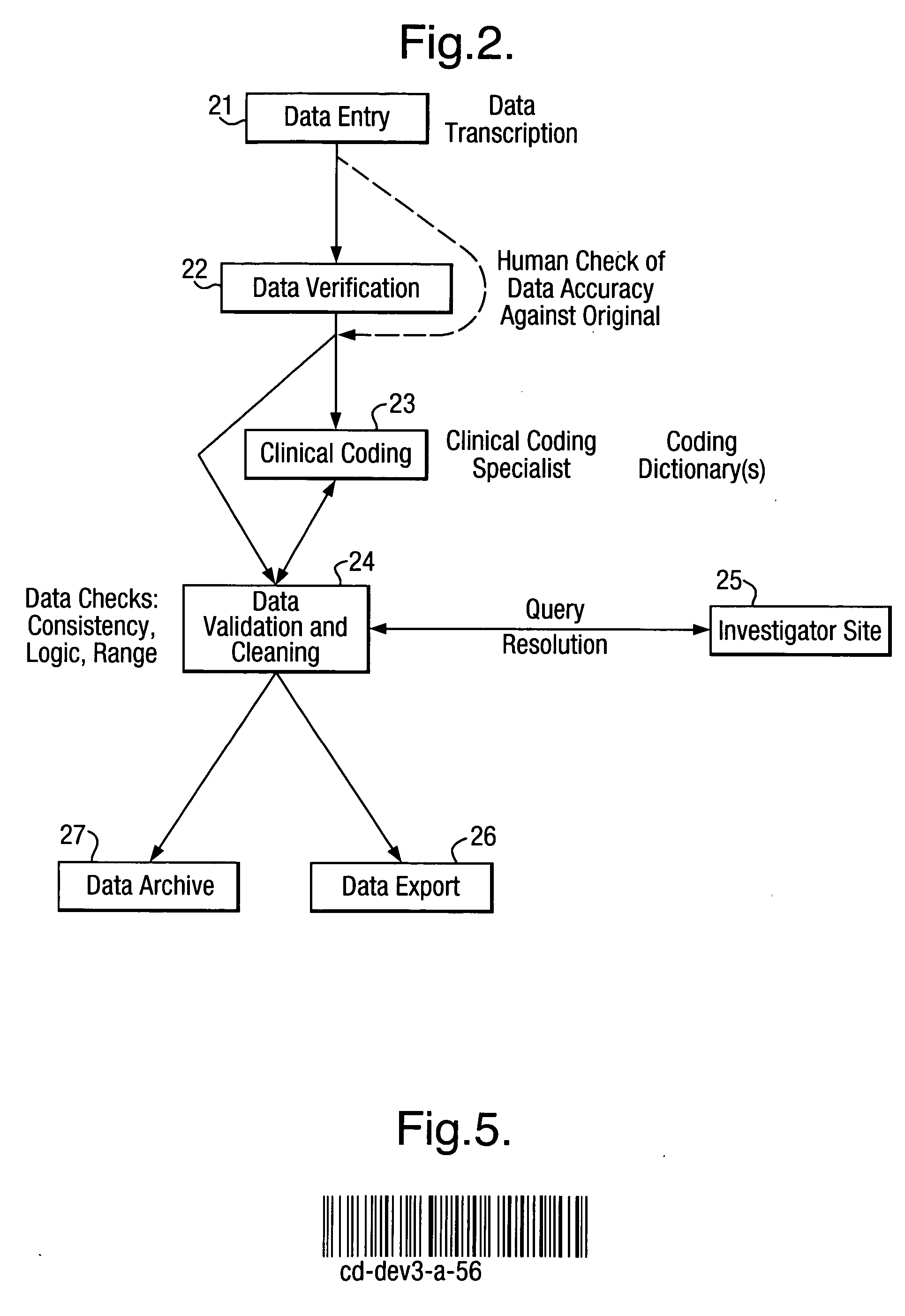Database system
a database system and data technology, applied in special data processing applications, instruments, electric digital data processing, etc., can solve the problems of heavy workload on the database system, long and expensive clinical trials, and up to 15% of the data collected in the trial may not be usabl
- Summary
- Abstract
- Description
- Claims
- Application Information
AI Technical Summary
Benefits of technology
Problems solved by technology
Method used
Image
Examples
Embodiment Construction
[0025] An embodiment of the invention will be described in which the database system is applied to a clinical trials data management system. A general description of the system and operations will be given first.
[0026] Typically clinical trials are conducted by specialist clinical research organisations (CRO) on behalf of a trial sponsor, for example the drug company whose product is being tested. FIG. 1 illustrates the natural data hierarchy which exists in this application. At the top level is the clinical research organisation, which often does work for more than one pharmaceutical sponsor. At the second level are the different trial sponsors for whom the clinical research organisation works. At the third level are the different products on trial, there may be more than one for each sponsor. A single product may have multiple projects associated with it, for example exploring different clinical indications, and so the next level is the different projects for each product. Each pr...
PUM
 Login to View More
Login to View More Abstract
Description
Claims
Application Information
 Login to View More
Login to View More - R&D
- Intellectual Property
- Life Sciences
- Materials
- Tech Scout
- Unparalleled Data Quality
- Higher Quality Content
- 60% Fewer Hallucinations
Browse by: Latest US Patents, China's latest patents, Technical Efficacy Thesaurus, Application Domain, Technology Topic, Popular Technical Reports.
© 2025 PatSnap. All rights reserved.Legal|Privacy policy|Modern Slavery Act Transparency Statement|Sitemap|About US| Contact US: help@patsnap.com



